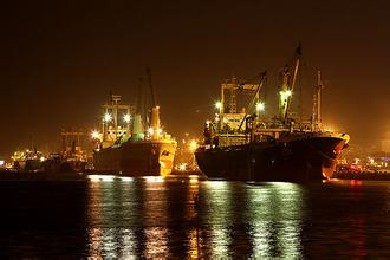Methods of Exporting and Channels of Distribution
The most common methods of exporting are indirect selling and direct selling. In indirect selling, an export intermediary such as an export management company (EMC) or an export trading company (ETC) usually assumes responsibility for finding overseas buyers, shipping products, and getting paid. The principal advantage of indirect exporting for most companies is that it provides a way to penetrate foreign markets without the complexities and risks of direct exporting.
Direct selling occurs when the producer deals directly with a foreign buyer. This approach has the advantages of providing more control over the export process, having a potential for higher profits, and allowing a closer relationship to the overseas buyer and marketplace. However, the company must spend more time, personnel, and corporate resources than with indirect exporting.
The paramount consideration in determining which method to use is the amount of resources a company is willing to devote to its international marketing effort. Other important factors to consider are the size of the firm, the nature of its products, previous export experience and expertise, and business conditions in the selected overseas markets.
Export Licenses
Many countries require export licenses to be obtained before exporting certain products therefrom. Export licenses can be required for a number of reasons, but usually apply to products dealing with natural resources, national security, or health and safety. Export licenses are also sometimes required to ensure compliance with international treaties or conventions.
Preparing Products for Export
Selecting and preparing a product for export requires not only product knowledge but also knowledge of the unique characteristics of each market being targeted. Before the sale can occur, a product may need to be modified to satisfy buyer tastes or needs in foreign markets.
Product adaptation to achieve success in a foreign market, a product may have to be modified in order to conform it to foreign government regulations, geographic and climatic conditions, buyer preferences, or standards of living. A product may also need to be modified to facilitate shipment or compensate for possible differences in engineering or design standards.
Foreign government product regulations are common in international trade and are expected to expand in the future. These regulations can take the form of high tariffs or of non-tariff barriers, such as tough product standards.
Engineering and redesign fundamental aspects of a product may require redesign. For example, electrical standards in many foreign countries differ. It is not unusual to find phases, cycles, or voltages that would damage or impair the operating efficiency of equipment designed for use in other countries.
Branding, labeling, and packaging some of the considerations that an exporter should undertake regarding the branding and labeling of products are:
Are international brand names important to promote and distinguish a product, or should local brands or private labels be employed to heighten local interest?
Can labels be produced in official or customary languages if required by law or practice?
Must information on product content and country of origin be provided?
Are weights and measures stated in the local units of measurement?
Are local tastes and customs considered?
Companies may find that building international recognition for a brand is expensive, and piracy of the company's brand names and counterfeiting of its products are widespread in some countries. The level of protection for brand names varies from one country to another, and in some developing countries, barriers to the use of foreign brands or trademarks may exist. It may be a costly and lengthy process to register a trademark, copyright, or patent, which can delay entry into the market by several years.
Installation an exporter should also consider the ease of installing the product overseas. If technicians or engineers are needed overseas to assist in installation, it is wise to preassemble or pretest the product before shipping in order to minimize the time in the field. If a product is sent disassembled, there may be savings in shipping costs, but there also may be a delay in payment if completion of the sale is contingent on the delivery of an assembled product. If trained personnel are not sent to install the product, all product information, such as training manuals, installation instructions, and parts lists, may need to be provided in the local language. It is also advisable to provide a quickly accessible line of communication-telephone, fax, or other-for customer service if you do not have a representative on site.
Warranties on some instances, companies should include a warranty on their products, particularly if the buyer is likely to expect a specific level of performance and a guarantee that it will be achieved. However, consumer expectations for warranties vary from country to country depending on the level of development, competitive practices, activism of consumer groups, local standards of production quality, and other similar factors. If a warranty is not expected, the exporter generally need not provide one; to do so might cause production costs to be higher than a competitor's. Exporters should keep in mind that servicing warranties is more expensive and troublesome in foreign markets. It is usually desirable to arrange warranty service locally with the assistance of a representative or distributor.









